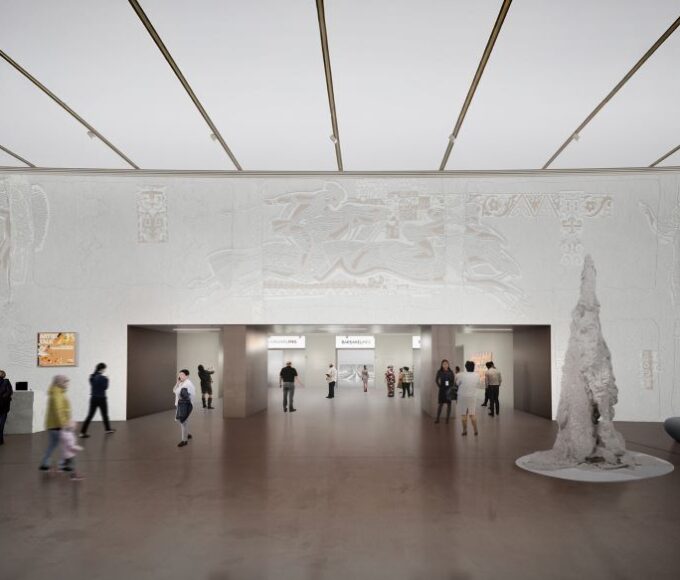The British have long been known for their love of bespoke design, a tradition that goes beyond mere aesthetics and into the realm of personal expression. Whether it’s a tailored suit from Savile Row or a custom-built home, the concept of “bespoke” is deeply ingrained in British culture. This inclination towards bespoke design extends naturally to the world of DIY (Do It Yourself), where the process of creating something unique with one’s own hands offers a similar sense of satisfaction and personal connection. But what drives this connection between bespoke design and DIY in the British psyche? This article explores the reasons behind this cultural phenomenon and why DIY projects resonate so strongly with those who appreciate bespoke craftsmanship.
The Legacy of Bespoke Craftsmanship
To understand the British inclination towards bespoke design, it’s essential to consider the historical context. The tradition of bespoke craftsmanship in Britain dates back centuries, with roots in various trades such as tailoring, carpentry, and metalwork. These crafts were not just about creating functional items but about infusing them with a sense of individuality and quality that mass-produced goods could never match.
In the past, the elite and the wealthy commissioned bespoke items as a way to showcase their status and taste. A bespoke suit, for example, was a symbol of refinement and sophistication, tailored to fit the wearer perfectly. Similarly, a custom-made piece of furniture was a testament to the skill of the craftsman and the discernment of the owner.
While the availability of mass-produced goods has increased over time, the appreciation for bespoke craftsmanship has remained strong in Britain. This enduring legacy has influenced the way many Britons approach design, favoring quality, uniqueness, and personal expression over uniformity and convenience.
DIY as a Modern Extension of Bespoke Culture
The rise of DIY culture in Britain can be seen as a modern extension of this long-standing tradition of bespoke design. At its core, DIY is about taking control of the creative process, making something with your own hands that reflects your tastes and needs. This aligns perfectly with the principles of bespoke design, where the end product is a unique creation tailored to the individual’s preferences.
In many ways, DIY projects allow people to experience the same satisfaction that comes from owning a bespoke item. The act of designing, building, or crafting something from scratch provides a deep sense of accomplishment and personal connection to the finished product. Whether it’s a handmade piece of furniture, a custom-built garden shed, or even a simple home improvement project, the result is something that carries the creator’s personal touch.
Moreover, DIY offers a way to bypass the impersonal nature of mass production. In a world where identical products are churned out by the thousands, DIY projects allow individuals to break away from the monotony and create something truly unique. This sense of individuality is a key aspect of both bespoke design and DIY culture, making them natural companions in the British mindset.
The Influence of British Design Aesthetics
British design aesthetics have always emphasized a blend of tradition and innovation, often drawing inspiration from the past while incorporating modern elements. This approach is evident in both bespoke design and DIY projects, where classic techniques and materials are often combined with contemporary ideas and personal creativity.
For example, many British DIY enthusiasts take inspiration from traditional architectural styles, such as Georgian or Victorian, when designing their projects. They might use reclaimed wood or vintage fixtures to add character and authenticity to their creations. This respect for tradition, coupled with a desire to innovate, is a hallmark of British design and is reflected in the DIY ethos.
Furthermore, the British tendency to value functionality and practicality in design also plays a role in the popularity of DIY. Unlike some design cultures that prioritize aesthetics over usability, British design often seeks to balance form and function. DIY projects allow individuals to tailor their creations to meet specific needs, ensuring that the final product is not only beautiful but also practical.
The Emotional Connection to DIY Projects
One of the reasons DIY resonates so strongly with those who appreciate bespoke design is the emotional connection it fosters. When you invest time, effort, and creativity into a DIY project, the finished product becomes more than just an object—it becomes a part of your personal story.
This emotional connection is similar to the bond people feel with bespoke items. Just as a custom-tailored suit carries the memories of the fitting process and the anticipation of wearing it for the first time, a DIY project holds the memories of the challenges overcome and the satisfaction of seeing your vision come to life.
For many Britons, this emotional connection is a significant part of the appeal of DIY. It’s not just about the end result but also the journey of creation. Each project becomes a reflection of the individual’s personality, skills, and creativity, making it uniquely theirs.
The Rise of DIY in Modern Britain
In recent years, DIY has seen a resurgence in popularity across Britain, fueled by various factors such as economic considerations, environmental awareness, and a growing interest in sustainable living. The COVID-19 pandemic also played a role, as lockdowns and social distancing measures prompted many people to take on home improvement projects as a way to pass the time and improve their living spaces.
This renewed interest in DIY has further strengthened the connection between bespoke design and DIY culture in Britain. As more people embrace the idea of creating their own custom solutions, the lines between professional bespoke craftsmanship and amateur DIY projects continue to blur. Today, it’s not uncommon to see DIY enthusiasts taking on complex projects that were once the domain of skilled craftsmen, from building custom furniture to renovating entire rooms.
This trend reflects a broader cultural shift towards self-reliance and personalization. In an age where consumers are increasingly seeking out products and experiences that reflect their individuality, DIY offers a way to achieve that sense of uniqueness and personal expression.
Why DIY Feels the Same
The British inclination towards bespoke design and the rise of DIY culture are deeply intertwined, rooted in a shared appreciation for quality, individuality, and personal expression. Both bespoke design and DIY offer a way to break free from the uniformity of mass production and create something that is uniquely yours.
For many Britons, DIY projects provide the same sense of satisfaction and connection that comes from owning a bespoke item. The process of designing and creating something with your own hands allows you to infuse it with your personality and creativity, making it more than just an object—it’s a reflection of who you are.
As DIY continues to grow in popularity, it serves as a reminder that the principles of bespoke design are alive and well in modern Britain. Whether through a custom-tailored suit or a handmade piece of furniture, the British love of bespoke craftsmanship endures, finding new expression in the world of DIY.













Leave a comment